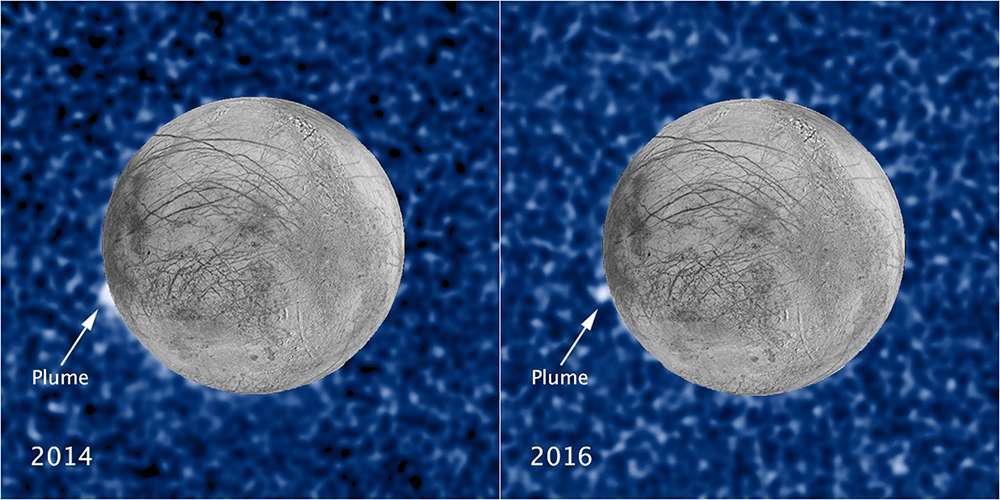Jupiter’s moon Europa is a fascinating world. It has a deep water ocean enveloped in a thick icy crust, that could potentially host life. It's thought that some of this water escapes the deep ocean in the form of plumes, but there has been no clear detection of this yet. Now, a new study from old data provides more evidence that Jupiter's moon does release water into space.
In a study published in Geophysical Research Letters, researchers took an unusual approach to provide evidence of water vapor being ejected from Europa. They looked at the presence of charged particles witnessed when NASA’s Galileo did a flyby of the Jovian moon in 2000.
This unorthodox approach has good reasoning behind it, of course. Jupiter’s magnetic field is 20 times stronger than Earth’s own and extends millions of kilometers into space. Europa travels within the magnetic field and interacts with the charged particles that permeate this space. But during its flyby, Galileo detected fewer of these particles around Europa than expected.
New computer simulation suggests that a serendipitous eruption might have happened at the time of the flyby. To try and explain the particle data from Galileo, scientists modeled the movements of high-energy protons during the flyby to try and reproduce the data observed, and they think they have an answer: the high-energy protons swarming around Jupiter hit a plume of water vapor released by Europa. The protons collided with uncharged particles from the plume, incorporated electrons from them and became neutrally charged themselves, and thus free to escape the clutches of Jupiter.
"This means they are no longer trapped in Jupiter's magnetic field and can leave the system at high speed," first author Dr Hans Huybrighs from the European Space Agency (ESA) said in a statement.

This is an interesting explanation for the lack of protons detected by Galileo and adds to the evidence of Europa's plumes, which includes detections of water vapor around the moon. The surface of Europa is cracked, changed by both internal processes and the incredible gravity of Jupiter as seen in these amazing high-res pictures. But we still don't have definitive evidence of plumes escaping Europa, not like the incredible plumes of Enceladus, Saturn's icy moon, as seen by Cassini.
However, this could change by the end of the decade. ESA's Jupiter Icy Moon Explorer (JUICE) is due to launch in 2022 and arrive in late 2029, followed by NASA’s Europa Clipper in 2030. Both missions are set to look at Europa like never before and will hopefully, finally, catch an erupting plume in the act.





